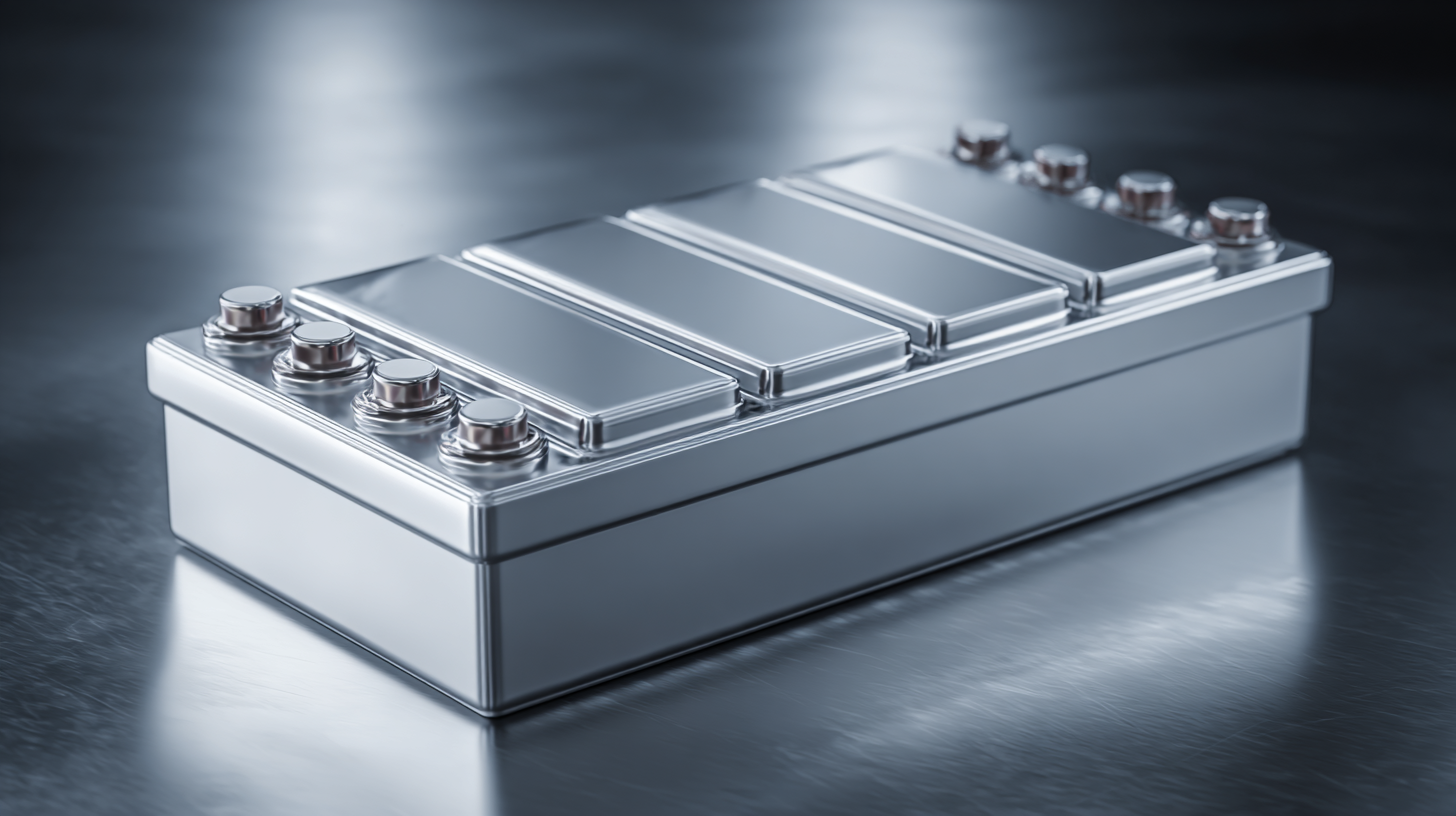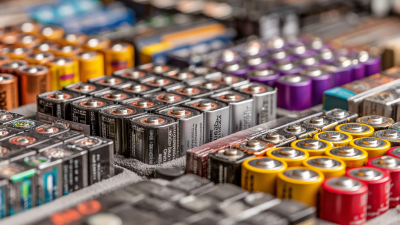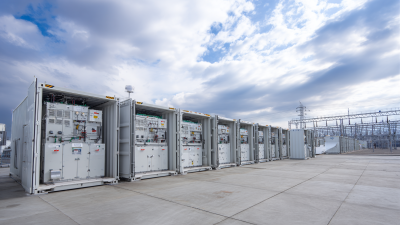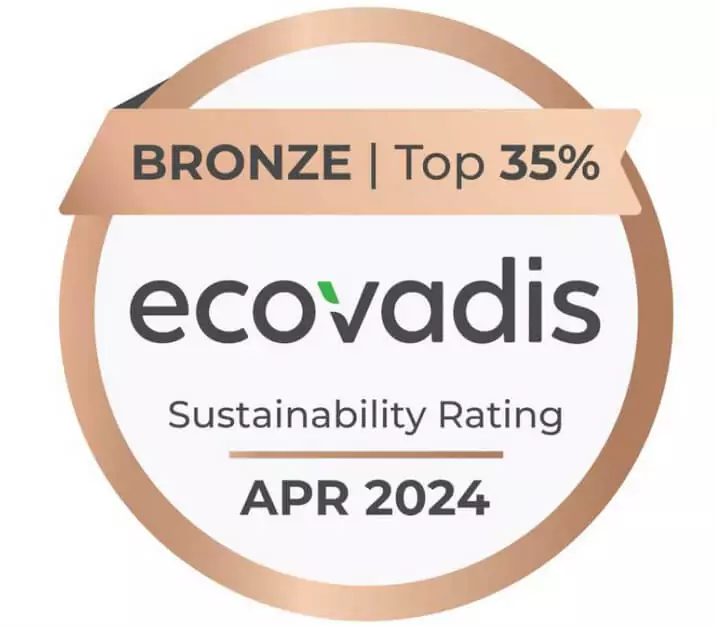2025 Top 5 Lithium Ion Car Batteries for Optimal Electric Vehicle Performance
As the electric vehicle (EV) market continues to expand rapidly, the performance of lithium ion car batteries has emerged as a critical factor influencing consumer choice and technological advancements. According to a recent report by the International Energy Agency (IEA), global sales of electric cars reached 6.6 million units in 2021, a staggering increase of 108% from the previous year, underscoring the growing importance of efficient battery technologies. With projections indicating that the worldwide stock of electric cars could surpass 145 million by 2030, the need for optimal battery performance is more crucial than ever.

Industry experts, such as Dr. Sarah Thompson, a leading figure in battery technology at the Battery Innovation Center, emphasize the significance of lithium ion car batteries in shaping the future of transportation. She states, "The advancements in lithium ion battery technology not only enhance vehicle range and reduce charging times but also play a pivotal role in achieving sustainability goals." This sentiment reflects a broader consensus in the industry that innovative battery solutions are paramount not only for vehicle performance but also for meeting environmental standards.
As we look towards 2025, the quest for the top lithium ion car batteries continues, driven by the demand for higher energy densities, longevity, and reduced costs. This article explores the leading lithium ion car batteries that are set to redefine electric vehicle performance, highlighting their features, advantages, and potential impact on the industry.
Top Advancements in Lithium Ion Battery Technology for 2025
The year 2025 promises to be a pivotal moment for lithium-ion battery technology,
particularly in enhancing electric vehicle (EV) performance. Recent market analysis reveals that the global lithium-ion
battery market is projected to grow from US$ 43.5 billion in 2023 to an
impressive US$ 124.4 billion by 2030, underlining the rapid evolution of
battery technologies and their applications. Notably, advancements in battery materials and design are leading to improved
energy density and cycling stability, critical factors for the performance and longevity of EVs.

Moreover, at the forefront of this technological evolution is the drive towards sustainability, particularly regarding
battery recycling. Recent studies emphasize that addressing the
challenges in lithium-ion battery recycling could unlock significant economic opportunities while also promoting
environmental responsibility. As the demand for electric vehicles surges, innovations in recycling processes could
mitigate the supply chain pressures associated with raw materials, paving the way for a more sustainable future
in energy storage and vehicle electrification.
Key Criteria for Choosing the Best Lithium Ion Batteries for EVs
When choosing the best lithium-ion batteries for electric vehicles (EVs), several key criteria should be considered to ensure optimal performance. First, the energy density of the battery plays a vital role; higher energy density allows for longer ranges between charges, which is essential for both daily commuters and long-distance drivers.
For instance, cutting-edge technologies have achieved energy densities exceeding 250 Wh/kg, demonstrating significant advancements in performance metrics.
Another critical factor is the thermal management of the battery system. Effective thermal management not only prolongs the battery's lifespan but also enhances operational safety and efficiency. Recent studies suggest that improved battery cooling systems can reduce temperature fluctuations, thereby enhancing overall battery health and performance.
Furthermore, sustainability is becoming increasingly important, as the industry seeks to mitigate the environmental impact of lithium-ion batteries. Multi-criteria decision frameworks are now being utilized to identify optimal recycling technologies, aiming to maximize material recovery while minimizing ecological footprints.
Lastly, the battery management systems (BMS) are integral to maintaining the health of lithium-ion batteries. Utilizing machine learning techniques, such as deep learning networks, enhances the accuracy of State of Health (SOH) monitoring, allowing for timely maintenance and management. This proactive approach ensures that EVs not only utilize their battery capacity efficiently but also contribute to a sustainable and zero-emission future.
Comparative Analysis of the Leading Lithium Ion Batteries on the Market
As the electric vehicle market continues to expand, the choice of lithium-ion batteries becomes increasingly critical for performance efficiency and driving range. This comparative analysis focuses on the leading lithium-ion batteries available in 2025, evaluating their technologies, capacities, and overall impact on vehicle performance. Manufacturers have made significant strides in battery chemistry, with options like NMC (Nickel Manganese Cobalt) and LFP (Lithium Iron Phosphate) emerging as front-runners, each offering distinct advantages tailored for various driving needs.

The foremost contenders in the market for 2025 include the Tesla 4680, which boasts a larger format designed for improved energy density and manufacturing efficiency. The CATL Qilin battery, renowned for its modular design, provides exceptional scalability and thermal management. Meanwhile, Panasonic's latest iteration focuses on enhancing longevity and rapid-charge capabilities, making it ideal for urban environments. By examining these state-of-the-art batteries, we gain insight into how advancements in technology are shaping the future of electric vehicles, ensuring longer ranges, shorter charging times, and ultimately, a more reliable driving experience.
Environmental Impact of Lithium Ion Batteries in Electric Vehicles
The environmental impact of lithium-ion batteries in electric vehicles (EVs) is a crucial aspect that demands attention as the demand for these vehicles continues to rise. While lithium-ion batteries provide significant benefits, including reduced greenhouse gas emissions and improved energy efficiency, their production and disposal processes pose challenges. Mining lithium, cobalt, and nickel can lead to habitat destruction, water pollution, and significant carbon footprints. Therefore, finding sustainable practices in sourcing these materials is essential.
**Tip:** When choosing an electric vehicle, consider manufacturers that prioritize sustainability in their battery sourcing and recycling efforts. Look for those that utilize ethical mining practices or engage in initiatives to reclaim and repurpose battery materials.
Furthermore, the lifecycle of lithium-ion batteries must be addressed. The end-of-life management of these batteries is vital to minimize their environmental impact. Effective recycling processes can recover valuable materials, reduce waste, and lessen the demand for new raw materials. Advances in technology have made recycling more efficient, but public awareness and infrastructure developments are still necessary.
**Tip:** Support organizations and policies that advocate for battery recycling programs. Your participation can help catalyze change in industry standards and promote a circular economy for battery materials.
2025 Top 5 Lithium Ion Car Batteries for EV Performance
This chart illustrates the energy density and environmental impact of the top 5 lithium-ion car batteries expected to dominate the market in 2025. Energy density is measured in Wh/kg, while environmental impact is rated on a scale from 1 to 10, with 1 being minimal impact and 10 being severe.
Future Trends in Lithium Ion Battery Development for Enhanced EV Performance
As the electric vehicle (EV) market continues to expand, the development of lithium-ion batteries is crucial for enhancing performance and efficiency. Industry experts predict that by 2025, the global lithium-ion battery market will reach a staggering $100 billion, driven by the increasing demand for EVs. Future trends indicate a shift towards solid-state batteries, which promise greater energy density and faster charging times compared to conventional lithium-ion cells. According to a report by ResearchAndMarkets, solid-state battery technology could increase energy density by up to 30%, enabling vehicles to achieve longer ranges and quicker refueling.
Additionally, advancements in battery recycling methods are expected to play a significant role in sustainable battery development. A report by BloombergNEF indicates that by 2040, over 70% of lithium-ion battery materials could be recycled, significantly reducing the environmental impact of battery production. This trend not only addresses resource scarcity but also enhances the lifecycle of EV batteries, making electric mobility more sustainable. As manufacturers focus on these innovative battery technologies, the performance and viability of EVs will undoubtedly reach new heights in the coming years.












